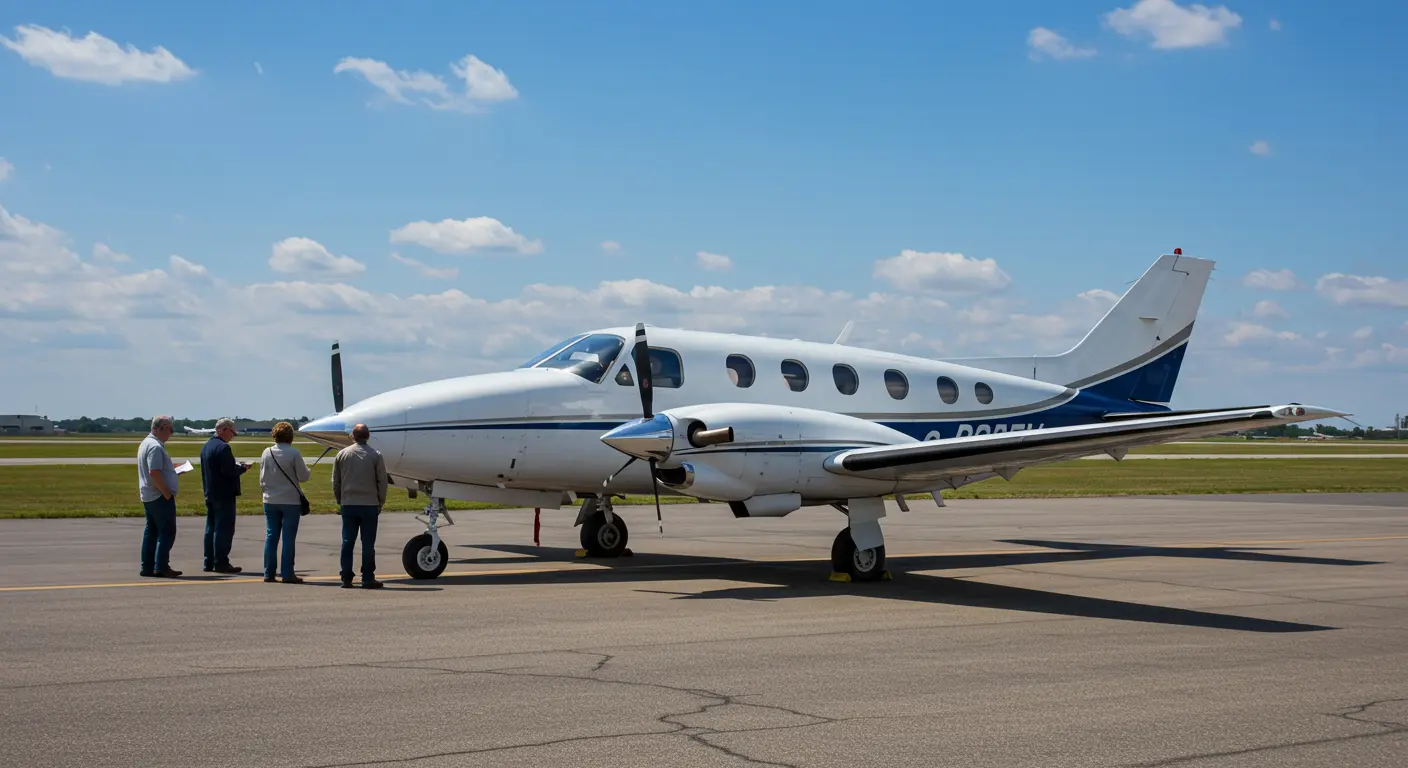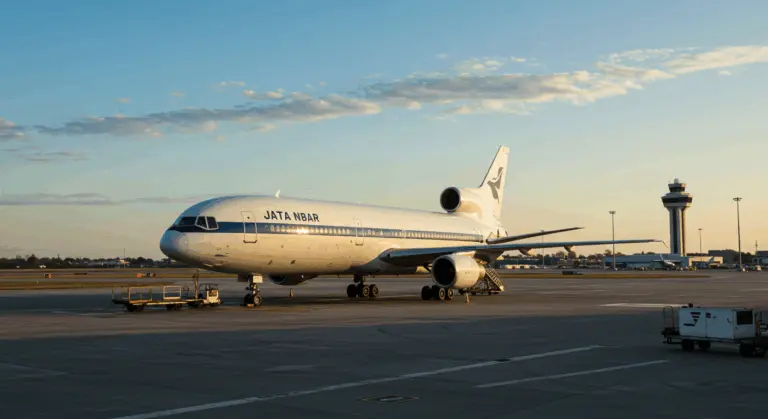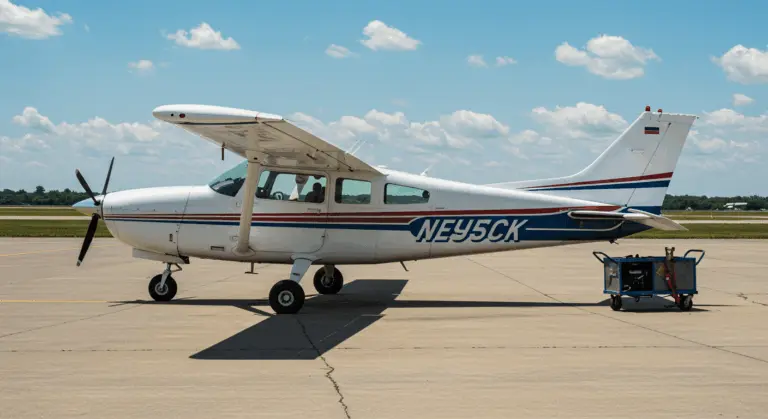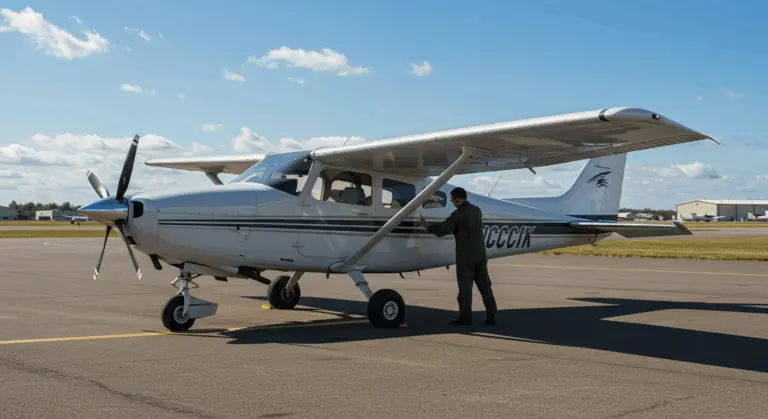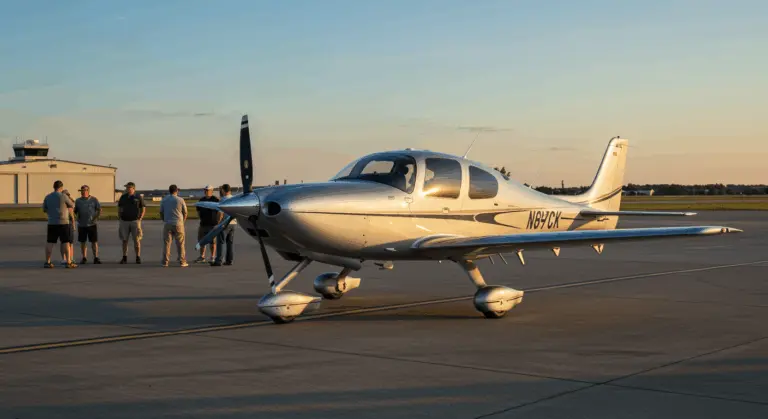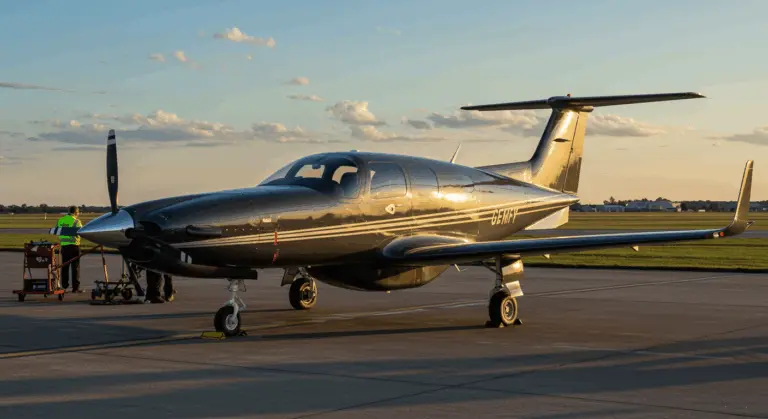Cessna 620 – Overview of the Aircraft and Its History
Overview of the Cessna 620 Aircraft
The Cessna 620 stands as a fascinating anomaly in aviation history—a prototype American business aircraft from the 1950s that pushed ambitious boundaries. Engineered for executive transport with four piston engines and a luxuriously spacious, pressurized cabin accommodating eight to ten passengers, it represented Cessna’s bold leap into the larger business aircraft arena, with capabilities that outpaced its era.
With its distinctive low-wing silhouette and robust four-engine architecture, the Cessna 620 was designed for exceptional reliability and performance. The aircraft featured a spacious six-foot-wide cabin—both pressurized and climate-controlled—offering luxury rarely seen in business aviation circles of that era. With a maximum takeoff weight of 13,500 pounds (6,123 kg), it reached speeds of 245 knots (282 mph or 454 km/h)
Only one example of the Cessna 620 ever saw completion, bearing the registration N620E. The aircraft’s model number contained an inside joke within Cessna’s walls—the 620 was supposedly ‘twice the airplane’ of their successful Cessna 310, a cheeky reference to its amplified size and enhanced capabilities. Though it never reached mass production, the 620 remains a testament to mid-century aviation innovation and Cessna’s willingness to explore new markets.
Development History of the Cessna 620
Development of the Cessna 620 commenced in the early 1950s, driven by the company’s strategic vision to expand beyond their successful 310 twin-engine aircraft and tap into growing demand for executive air travel.
Cessna officially unveiled the Model 620 project in September 1953. The project took approximately three years, with engineers working to create an aircraft that could satisfy demanding executive transport requirements while keeping operating costs within reasonable bounds.
The design goals for the 620 were comprehensive:
-
All-weather flying capability.
-
A pressurized and air-conditioned cabin for passenger comfort.
-
A multi-engine layout for enhanced safety.
-
A competitive price point.
-
Capacity for eight to ten passengers.
First Flight of the Cessna 620 Prototype
On August 11, 1956, the Cessna 620 prototype N620E lifted off on its maiden flight—a moment that would mark both triumph and the beginning of the end.
The maiden flight went well, showing stable handling characteristics and smooth system operation, including the critical pressurization system.
Subsequent flight testing confirmed the aircraft’s strong performance. Despite these promising results, the 620 would forever remain a singular prototype—no production examples would ever follow.
Specifications of the Cessna 620
The Cessna 620 featured its substantial dimensions: a 55-foot wingspan (16.76 meters), 340 square feet of wing area (32 square meters), and a maximum takeoff weight of 13,500 pounds (6,123 kg).
Performance-wise, the aircraft reached a maximum speed of 245 knots (282 mph or 454 km/h) and climb to a service ceiling of 27,500 feet (8,400 meters)—sufficient to fly above most weather disturbances. Its generous 535-gallon fuel capacity translated to an impressive range of approximately 1,700 miles.
Engine Specifications of the Cessna 620
Four Continental GSO-526-A engines formed the heart of the Cessna 620’s power plant—each a robust air-cooled flat-six configuration delivering 350 horsepower. This choice was carefully made to balance reliability, performance, and maintainability for its intended mission. Combined, these engines produced 1,400 horsepower, giving the 620 strong performance in its size and weight class.
These Continental power plants featured sophisticated supercharging technology, significantly improving their high-altitude performance and enabling the aircraft’s impressive 27,500-foot service ceiling. The superchargers maintained strong power output in the thin air of cruising altitudes, ensuring consistent performance throughout the entire flight envelope. This was essential for efficient operation above weather systems.
The four-engine configuration provided redundancy that was valuable for business travel applications. Should one engine fail, the aircraft could continue flying safely on the remaining three—a clear advantage over the twin-engine designs dominating that era. Moreover, Continental engines were known for maintenance accessibility, particularly in remote locations, positioning the 620 as a pragmatic choice for businesses operating far from major aviation hubs.
Cessna 620 Project Cancellation
Despite the prototype’s successful maiden flight and impressive performance demonstrations, the Cessna 620 project was cancelled in October 1957—barely a year after taking to the skies. The reason was economic reality. Comprehensive cost analysis showed: the Model 620 would be simultaneously smaller and more expensive than surplus propeller-driven airliners flooding the market as airlines upgraded to newer equipment.
The rapidly evolving aviation landscape of the late 1950s created another problem. Jet-powered airliners were entering regional markets, while turboprop regional aircraft offered superior power and capacity compared to the piston-engine 620. These advances made the 620 obsolete before it could even reach production lines. Early pricing estimates were uncompetitive, weakening its market position.
Corporate politics sealed the decision, as management faced stockholder concerns about poor profit prospects. In the aftermath of cancellation, Cessna shifted focus to the emerging business jet market—a strategic redirection that led to the highly successful Citation series.
Legacy and Impact of the Cessna 620
Though the Cessna 620 never entered production, its development journey had lasting impact on both Cessna and the broader business aviation landscape. The project showed the viability of a four-engine executive aircraft featuring advanced safety and comfort features. The prototype itself stands as a remarkable engineering achievement, important beyond commercial failure.
The 620’s main legacy was how its cancellation drove Cessna’s strategic transformation. The hard-won lessons regarding cost efficiency and market positioning proved valuable in the company’s long-term success story and its pivotal shift toward business jets.
The Cessna 620 serves as an interesting case study in market timing, its development occurring during the industry’s major transition from piston engines to turboprops and jets. Its narrative highlights the importance of adaptability in aerospace ventures. Sometimes, even a project that never reaches fruition can change a company’s destiny.

